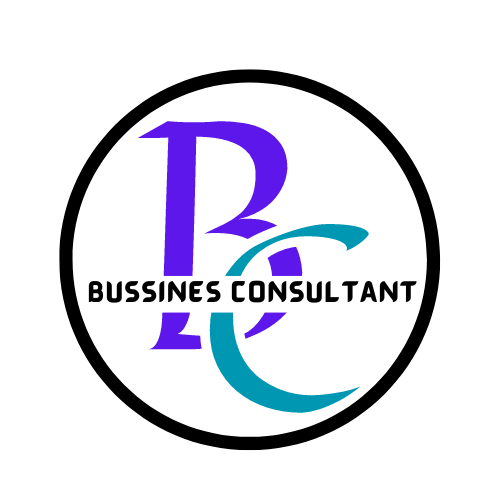Understanding business planning strategies!
Long term Business Planning
Definition and Importance
Long-term business planning refers to the process of mapping out a business’s goals and the strategies needed to achieve them over an extended period, usually three to five years more. This type planning is vital as it provides a clear direction for the business, helps allocate resources effectively, and enhances decision-making by anticipating future challenges and opportunities.
Key of Long term Planning
The core of long-term planning is creating a roadmap that aligns the various aspects of your business. This allows you to forecast needs, develop strategies, and prepare for potential hurdles in the road ahead. A well-thought-out plan serves not just as a guide, but as a motivation that keeps your team focused and engaged.
Difference Between Short term and Long term Planning
While short-term planning focuses on immediate objectives—like quarterly sales targets or monthly budget adjustments—long-term planning looks at the bigger picture. Short-term plans often react to current trends or immediate pressures, whereas long-term plans are more visionary, aiming for sustainable growth and positioning the business for future success.

Setting Clear Goals and Objectives
Importance of Goal Setting in Business
Setting clear goals is crucial for any business as it gives your team a target to aim for. Goals provide purpose and motivate employees by giving them something tangible to work towards. When everyone knows the end goal, it’s easier to coordinate efforts and measure progress.
Types of Goals: Qualitative vs. Quantitative
Goals can be qualitative (focused on feelings, quality, or improvements like “enhancing customer satisfaction”) or quantitative (specific and measurable, like “increasing sales by 20% in the next year”). Both types are essential for a well-rounded approach; qualitative goals can foster a positive company culture, while quantitative goals provide clear milestones.
Aligning Goals with Vision and Mission
It’s important that your business goals align with your company’s overall vision and mission. This ensures that all efforts contribute to the business’s long-term purpose. When goals are in sync with your mission, it not only motivates employees but also builds a cohesive brand message that resonates with customers.

Market Analysis and Competitive Landscape
Conducting Thorough Market Research
Understanding your market is fundamental for successful long-term planning. Conducting market research helps identify opportunities for growth and areas where your business can adapt or innovate. Surveys, focus groups, and industry reports can provide valuable insights into customer preferences and market dynamics.
Identifying Your Competition
Knowing who your competitors are and what they offer is crucial. Conduct a competitive analysis to understand their strengths and weaknesses. This information can help you differentiate your offerings and identify gaps that your business can fill in the marketplace.
Market Trends and Consumer Behavior
Keeping a finger on the pulse of market trends and consumer behavior is essential. Are there shifts in consumer preferences? Is technology evolving in a way that impacts your industry? Staying informed allows you to pivot and adapt your strategies to meet the changing needs of your customers.
Financial Planning and Investment Strategies
Assessing Current Financial Health
Before making any long-term financial commitments, it’s important to assess your current financial health. This involves reviewing your balance sheet, cash flow statements, and profit margins. Understanding where your business stands financially will inform better decisions about future investments.
Budgeting for Long term Investments
Long-term success often involves upfront investments, whether in technology, talent, or infrastructure. Create a detailed budget that accounts for these investments while ensuring that you also have funds available for operational expenses and unforeseen circumstances.
Securing Funding and Managing Resources
When considering expansion or new projects, securing the right funding is key. This may involve seeking loans, investors, or even grants. Alongside this, effective resource management ensures that your investments yield the desired results while minimizing waste.
Adaptive Strategies for Sustainable Growth
Flexibility in Business planning strategies
Even the best-laid plans can go awry. Flexibility is essential in long-term planning. Being willing to adapt your strategies in response to new information or changing market conditions can be what sets successful businesses apart from those that falter.
Incorporating Feedback and Data Analytics
Regularly integrating feedback from employees and customers can provide valuable insights into what’s working and what isn’t. Data analytics tools can help you interpret this feedback and make informed decisions that enhance your business processes.
Building a Culture of Continuous Improvement
Encouraging a culture of continuous improvement within your organization can lead to sustained growth. This means always looking for ways to enhance efficiency, improve products, and boost customer satisfaction. When your team is empowered to innovate, the business stands to benefit greatly.
Conclusion
Recapping the importance of long-term business planning strategies shows us that a clear strategic roadmap is invaluable in navigating the complexities of growth. Regularly revisiting these plans ensures your business stays on track, adapting to new challenges and opportunities as they arise. A proactive approach not only reinforces your vision but also cultivates a resilient organization ready for whatever the future holds.
Typically, long-term business planning spans three to five years, but it can be adjusted based on your specific business needs and industry dynamics.
It’s a good practice to reassess growth strategies at least once a year, or more frequently if market conditions change significantly.
Employee involvement is crucial. When team members contribute to the planning process, they feel more invested in the outcomes, leading to better execution of the strategies.
Small businesses can greatly benefit as long-term planning helps them set clear goals, navigate competition, and allocate resources more effectively, ultimately leading to sustainable growth.
There are various tools available, such as project management software (like Trello or Asana), financial planning tools (like QuickBooks), and market analysis platforms (like Statista), which can streamline the long-term planning process.




